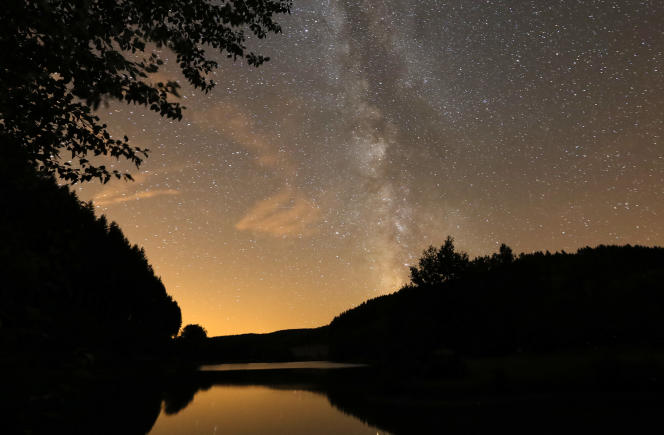It’s a new kind of space conquest. That of a prestigious label, which rewards the darkest night skies in the world. Since 2018, the Morvan regional natural park has been working to obtain its star and become an “international dark sky reserve” (RICE). The Burgundy region hopes to join the very exclusive club of places most protected from light pollution this fall.
Around twenty sites around the world have already been recognized for the purity of their skies by the International Dark-Sky Association (IDA), the American non-profit organization which awards the award, including four in France: the observatory of the Pic du Midi de Bigorre (2013), the Cévennes national park (2018), the Alpes Azur Mercantour territory (2019) and the Millevaches regional natural park, in Limousin (2021). Morvan hopes to be next on the list, knowing that in France alone around ten other applications are being studied.
The regional park, 3,220 square kilometers straddling the four departments of Burgundy (Côte-d’Or, Nièvre, Saône-et-Loire and Yonne), has a low population density (21 inhabitants per square kilometer). It is far from large cities (Autun and Avallon are the two main urban centers), and its sky is “naturally” good for observing the stars.
Adjust public lighting flows
But, to have a chance to shine in the parks firmament, the candidate had to redouble his efforts to renovate, adjust and adapt the flow of public lighting. In-depth work, presented in a detailed file of nearly 200 pages! “The criteria are very demandingexplains Pascal Pommé, mayor of Chissey-en-Morvan (283 inhabitants) and elected representative for the labeling of the park. The color temperature (warm or cold), the intensity of the lighting and the orientation of the street lamps must meet standards developed by the IDA. » The title also rewards a global approach to protecting the nocturnal environment, and not just good visibility of the celestial vault.
The first step was to determine the area eligible for certification. A RICE always includes a central region, the “core”, where darkness must be preserved as much as possible, and a peripheral zone, “buffer”, where elected officials, individuals and companies recognize the importance of the starry sky and are committed to protecting it in the long term.
In 2020, a campaign to measure the darkness of the sky was carried out in all the communities in the park. Some, too “polluted” by the halo of Autun and Avallon (respectively 13,600 and 6,500 inhabitants), two towns that were nevertheless medium-sized, could not claim to satisfy the labeling criteria within a reasonable time. Others, on the contrary, were in the dead of night completely devoid of public or private lighting and came close to the quality of night obtained in the Atacama Desert, in Chile, considered the darkest spot on Earth!
You have 39.23% of this article left to read. The rest is reserved for subscribers.
